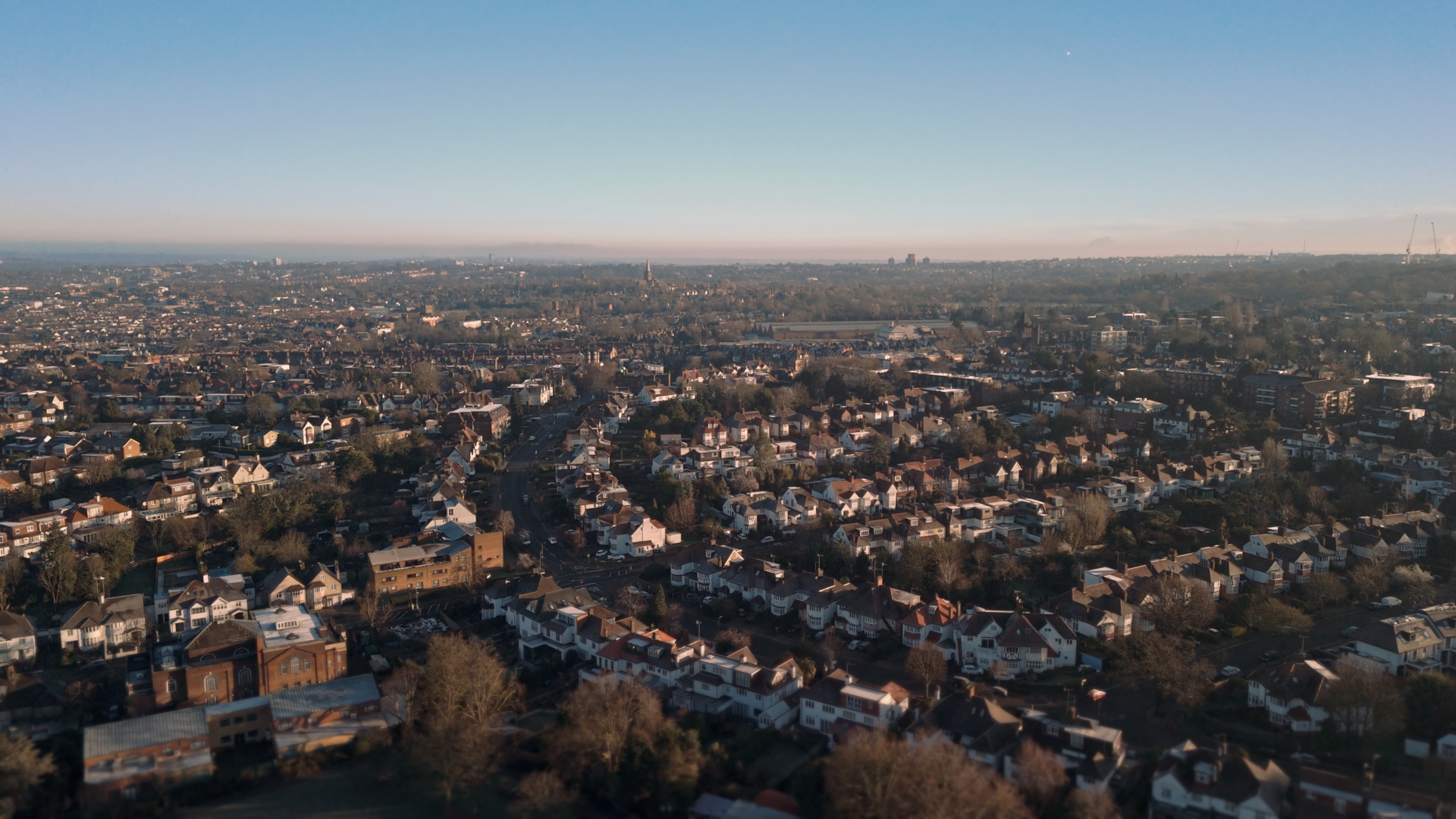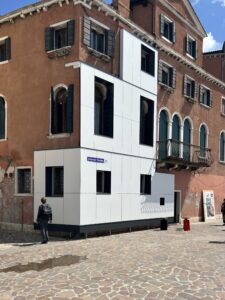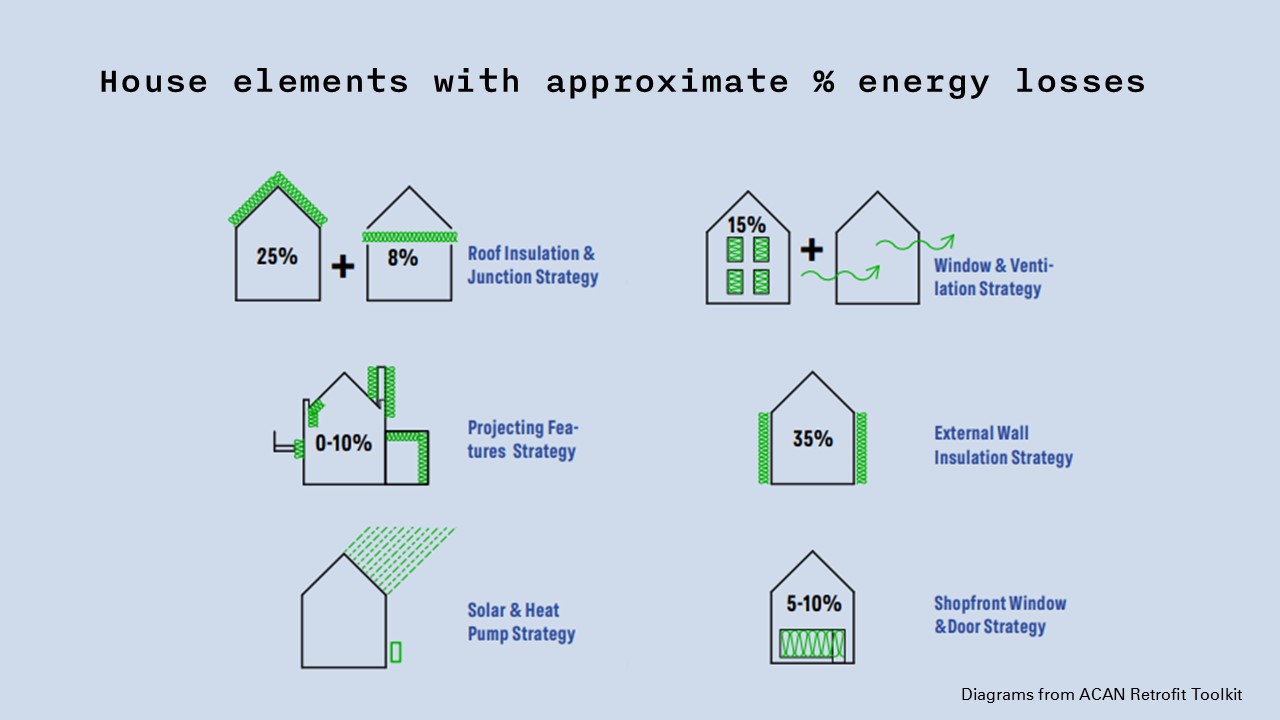Futureproofing is Preserving: Retrofit in London’s Conservation Areas
< Back to InsightsFifty percent of inner London neighbourhoods are in Conservation areas. These areas, are filled with character, architectural beauty, and cultural heritage. But, they often conceal a more pressing issue: they are among the least energy-efficient properties in the country. At Collective Works, we work with historic homes every day. And we believe that futureproofing is preserving. Retrofit in conservation areas is vital if we want these beautiful neighbourhoods to thrive in the next century – not just to meet environmental goals, but to ensure they remain comfortable, healthy, and desirable places to live.

Why Retrofit Now?
The UK has committed to reaching Net Zero by 2050. This goal cannot be met without addressing the carbon emissions from our existing homes, which make up around 20% of total UK emissions. The stark truth is this: 80% of the buildings we’ll be using in 2050 already exist today. And many of these are in conservation areas.
Historic buildings often underperform when it comes to energy efficiency. They can be cold, draughty and prone to damp.
These buildings were designed to ‘breathe’. They are made of materials like lime, stone, brick, and timber alongside lime-based plasters that allowed moisture to naturally pass through the structure.
However, in our work across London, we frequently encounter historic buildings that have been inappropriately retrofitted with non-breathable materials such as gypsum boards and plastic-based paints. This traps moisture, and can lead to mould contributing to poor health outcomes for occupants and high running costs. You may have heard of Awaab’s Law, which will take effect in October 2025, named after a young boy who tragically died due to mould in social housing. This illustrates the urgency of creating healthy indoor environments – even in the most beautiful homes.
Is retrofit suitable for homes in a conservation area?
Absolutely. These areas reflect a deep sense of place. But preserving historic character does not mean freezing these buildings in time. On the contrary, leaving them unmodernised – cold, inefficient, and unliveable – risks them becoming obsolete, neglected, and ultimately a threat to the character they are meant to protect.
Retrofitting offers a path forward. By upgrading these homes responsibly and sympathetically, we preserve not only their look, but their role in the life of the city.

The Estonian pavilion at the Venice Architecture Biennale explore the potential for Retrofit to enhance the environment, not just hit energy targets. The curators argue that insulation should not be treated as a “bandage” or “quick fix”, but rather as a meaningful upgrade that addresses the various components defining quality of life.
Photo by Rob Fiehn
What exactly is a retrofit?
A retrofit is more than just a renovation. It’s a targeted effort to improve a building’s performance – energy use, air quality, heating systems, insulation, and more – without compromising its architectural integrity. In practice, this might mean adding:
- Roof insulation
- Improved glazing
- Ventilation system
- Solar panels
- Switching to heat pumps
- Using breathable materials
Our recent deep retrofit of a Victorian home in London – though not in a conservation area – achieved many of the environmental targets set out by the EnerPhit Standard, the retrofit equivalent of Passivhaus. After a year, the electricity bill took the form of a £69 rebate from their energy provider: the house produced more energy than it consumed.
How can we retrofit in a conservation area?
We can retrofit our historic buildings, but it requires care and knowledge.
A study by the Architecture Climate Action Network (ACAN) showed that many conservation area homes can be upgraded without affecting street character. Some of the most promising interventions include:
- Roofs: Up to 50% of roofs can be improved, especially where heritage tiles have already been removed.
- Rear or side walls: Nearly 45% of walls are not visible from the street and can be insulated externally.
- Solar panels: Just 15m² of roof area is needed for a functional system that will supply most of the electricity needed for a home.
- Heat pumps: Effective when paired with proper insulation and airtightness.

Guidance from Historic England supports energy efficiency measures where they do not harm heritage value. And progressive planning departments are beginning to act – The Royal Borough of Kensington and Chelsea now allows solar panels on many Grade II listed buildings without individual consent.
What’s holding us back?
Despite the technical knowledge and the policy frameworks in place, a number of barriers persist in making retrofit in conservation areas more widespread:
- Awareness: Homeowners often don’t know retrofitting is possible—or beneficial.
- Skills gap: Many contractors are unfamiliar with retrofit techniques, especially in historic buildings.
- Planning delays: Local authorities are overwhelmed and often lack updated retrofit policies.
- Cost: Retrofitting is taxed at 20% VAT, while new builds are exempt – a perverse incentive that favours demolition over reuse.
We’ve even seen councils with bold climate targets reject high-performance windows in back elevations of conservation homes. That’s a disconnect we must address.
What can conservation societies do?
We recently presented to the Norland Conservation Society at their Annual Lecture about retrofitting in a conservation area.

Local conservation societies are uniquely placed to advocate for thoughtful, sustainable change. Here’s how:
- Engage in open dialogue with your Local Authority, to communicate that you actively welcome sustainable measures within the Conservation Area.
- Promote guidance documents tailored to local conservation areas, even if not yet adopted into council policy.
- Support Local Listed Building Consent Orders for solar panels and similar upgrades.
- Push for building element audits to clarify which parts of buildings are truly heritage and which can be upgraded.
- Lobby for VAT reform to level the playing field between retrofit and new build.
Final thoughts
Historic homes are treasures and our conservation areas contribute a lot to our built environment – but they must evolve to survive. Retrofit is not a threat to heritage; it is its best hope.
By combining technical knowledge with local insight, we can preserve what we love while preparing for the future. The key is not choosing between beauty and sustainability, but understanding that they can – and must – coexist.
Here’s what Martin Ingell, the Chairman of the Norland Conservation Society said about the lecture.
“Members are keen to know what they can and can’t do to adapt their homes for modern living. They want to respect the character of the Conservation Area and use materials and methods that are good for the environment. Siri and Khuzema’s presentation introduced the concept that ‘futureproofing is preserving’. It outlined new approaches to old problems. Full of ideas and examples showing how Collective Works can adapt buildings in Conservation Areas. I must thank them both for leaving members enthused about the possibilities for their homes.”
Let’s have a chat about your vision and
how we can help you realise it.
Collective Works are an architecture & design studio. Our network of professionals will create your perfect solution.
